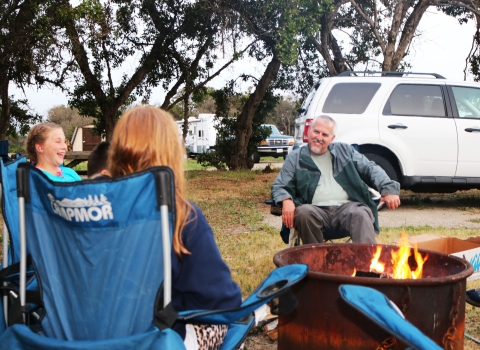Eleven genetically valuable captive-born Mexican wolf pups have been placed into wild dens to be raised in the wild by their surrogate parents after another successful fostering season. Now in its seventh year, the Mexican wolf fostering program continues to help boost the genetic diversity of this endangered subspecies.
Over a three-week period this spring, 11 pups were fostered into five wild packs across New Mexico and Arizona. The pups traveled from captive facilities across the U.S. as part of a coordinated effort to place genetically diverse wolves into the wild population in support of recovery efforts.
Fostering is a proven method used by the Mexican Wolf Interagency Field Team (IFT) to increase genetic diversity in the wild Mexican wolf population. It begins with carefully managed breeding by the Mexican Wolf Species Survival Plan (SSP) program to produce genetically diverse pups within the captive population. Within 14 days of whelping (being born), the captive-born pups are transported to the wild and mixed together with similarly aged wild pups.
Once all of the pups are placed back into the wild den, the breeding female’s maternal instinct kicks in. She will feed and care for both the wild and captive-born pups. With the help of her pack mates, the pups will be raised with the skills and knowledge needed for a life in the wild. The IFT has documented that fostered pups have the same survival rate as wild-born pups in their first year of life (about 50%).
“The care, planning and teamwork that went into this year’s cross-fostering is remarkable,” said Ed Davis, biologist with the U.S. Fish and Wildlife Service. “Many contributed to the success of this year’s efforts, including interns, biologists, veterinarians, captive facility staff, and individuals that provided flight support. It will take all of us continuing to work together to achieve greater genetic diversity in the wild population.”
Five different captive-born litters provided Mexican wolf pups for fostering into the wild population. The following facilities provided pups this year:
- Brookfield Zoo in Chicago, Illinois: one litter provided three pups fostered into the Whitewater Canyon Pack in New Mexico;
- El Paso Zoo in El Paso, Texas: one litter provided two pups fostered into the Dark Canyon Pack in New Mexico and one pup fostered into the Iron Creek Pack in New Mexico;
- Wolf Conservation Center in South Salem, New York: one litter provided one pup fostered into the Iron Creek Pack in New Mexico;
- Southwest Wildlife Conservation Center in Scottsdale AZ: one litter provided two pups fostered into the Rocky Prairie Pack in Arizona;
- Sevilleta National Wildlife Refuge, in Socorro, New Mexico: one litter provided two pups fostered into the Buzzard Peak Pack in New Mexico.
Aerial support for this year’s operations was provided by LightHawk Conservation Flying and the Arizona Game and Fish Department’s Aviation Program.
“Although the 11 pups fostered is lower than hoped for, it is a major contribution to managing genetic improvements in the wild population,” said Jim deVos, Arizona Game and Fish Department’s Mexican Wolf Coordinator. “Since the inception of the program, 83 pups have been placed into wild wolf dens and as a result, three of four genetic metrics have shown improvements, which bodes well for the long-term survival of the Mexican wolf. Planning has already begun for the 2023 fostering program, with a goal of getting more pups in dens next year than this year.”
Since the beginning of the cross-fostering program, a minimum of 13 pups have survived at least two years in the wild and reached breeding age. Four of these have reproduced in the wild, and a minimum of seven litters from cross-fostered wolves have been documented through 2021. In addition to the four cross-fostered wolves that have already been documented reproducing in the wild, the IFT has observed denning behavior this spring from three other 2-year-old cross-fostered wolves that are breeding for the first time in 2022. Results from observed denning behavior will not be documented until later in the spring and summer when pups become active and more visible.
Pups are too young to be radio collar when fostered, but genetic samples are taken so they can be identified if captured at a later date. It is likely that other fostered pups are currently alive and contributing to improving the genetic diversity of the wild population and helping meet recovery criteria, but have not yet been recaptured
The IFT will continue to monitor the packs that pups were placed in through GPS and radio telemetry signals from collars on older wolves within the pack to avoid further disturbance. Later, through remote camera observations and efforts to capture the young of the year, the IFT plans to document additional survival of cross-fostered pups. .
The end-of-year census for 2021 showed a minimum of 196 wild Mexican wolves in the Mexican Wolf Experimental Population Area. This marked a 5% increase in the population from a minimum of 186 wolves counted at the end of 2020. This is the sixth consecutive year of growth in the wild population and represents a doubling of the population since 2015.
Cross-fostering is a coordinated effort of the U.S. Fish and Wildlife Service, Arizona Game and Fish Department, New Mexico Department of Game and Fish, Bureau of Land Management, New Mexico State Lands Office, U.S. Forest Service, and the Mexican Wolf Species Survival Plan.


